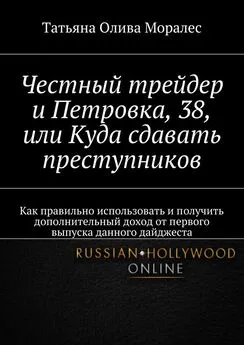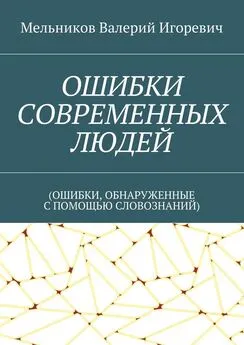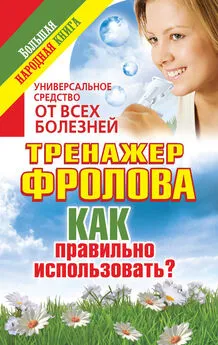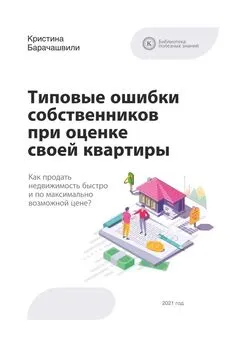Ив Жангра - Ошибки в оценке науки, или как правильно использовать библиометрию [калибрятина]
- Название:Ошибки в оценке науки, или как правильно использовать библиометрию [калибрятина]
- Автор:
- Жанр:
- Издательство:ООО «ЛитРес», www.litres.ru
- Год:2018
- ISBN:нет данных
- Рейтинг:
- Избранное:Добавить в избранное
-
Отзывы:
-
Ваша оценка:
Ив Жангра - Ошибки в оценке науки, или как правильно использовать библиометрию [калибрятина] краткое содержание
Ошибки в оценке науки, или как правильно использовать библиометрию [калибрятина] - читать онлайн бесплатно полную версию (весь текст целиком)
Интервал:
Закладка:
Вернуться
162
Здесь я ссылаюсь на публикацию Thomson Reuters “2014 HCR as of September 8, 2015,” см.: http://highlycited.com, дата доступа: 21 декабря 2015 г.
Вернуться
163
Étienne Gless, “Ipag: Les secrets d’une progression ‘fulgurante’ en recherche,” L’Etudiant.fr, October 9, 2014, http://www.letudiant.fr/educpros/enquetes/ipag-les-secrets-d-une-progression-fulgurante-en-recherche.html.
Вернуться
164
EFMDP Quality Improvement System, EQUIS Standards and Criteria , January 2014, p. 64, https://www.efmd.org/images/stories/efmd/EQUIS/2014/EQUIS_Standards_and_Criteria.pdf.
Вернуться
165
См.: Sébastien Mosbah-Natanson, Yves Gingras, “The globalization of social sciences? Evidence from a quantitative analysis of 30 years of production, collaboration and citations in the social sciences (1980–2009),” in Current Sociology , 62 (5), 2014, pp. 626–646.
Вернуться
166
William Bruneau, Donald C. Savage, Counting Out the Scholars: How Performance Indicators Undermine Universities and Colleges (Toronto: James Lorimer, 2002).
Вернуться
167
Stanford G. Thatcher, “The Crisis in Scholarly Communication,” in Chronicle of Higher Education, 1995, March 3, B1–B2; Carol Tenopir, Donald W. King, “Trends in Scientific Scholarly Journal Publishing in the United States,” in Journal of Scholarly Publishing , 1997, 28 (3), pp. 135–170; Glenn S. McGuigan, Robert D. Russel, “The business of academic publishing: A strategic analysis of the academic journal publishing industry and its impact on the future of scholarly publishing,” in Electronic Journal of Academic and Special Librarianship , 9 (3), http://southernlibrarianship.icaap.org/content/v09n03/mcguigan_g01.html; Vincent Larivière, Stefanie Haustein, and Philippe Mongeon, “The Oligopoly of Academic Publishers in the Digital Era,” in PLoS ONE , 2015, 10 (6), e0127502.
Вернуться
168
Mikael Laakso, Patrik Welling, Helena Bukvova, Linus Nyma, Bo-Christer Björk, and Turid Hedlund, “The Development of Open Access Journal Publishing from 1993 to 2009,” in PLoS ONE , 2011, 6 (6), e20961. doi:10.1371/journal.pone.0020961.
Вернуться
169
Zoe Corbyn, “Retractions up tenfold,” in Times Higher Education , 2009, (20 August), https://www.timeshighereducation.com/news/retractions-up-tenfold/407838.article; Richard van Noorden, “Brazilian citation scheme outed. Thomson Reuters suspends journals from its rankings for ‘citation stacking.’” in Nature , 2013, 500 (29 August), pp. 510–551; Charlotte J.Haug, “Peer-Review Fraud – Hacking the Scientific Publication Process,” in New England Journal of Medicine , 2015, 373 (17 December), pp. 2393–2395; Jeffrey Beal, “Predatory journals: Ban predators from the scientific record,” in Nature, 534 (16 June).
Вернуться
170
T. D. Wilson, “The Nonsense of ‘Knowledge Management’,” in Information Research , 2002, 8 (1), http://InformationR.net/ir/8-1/paper144.html; Michael Power, “The Audit Society – Second Thoughts,” in International Journal of Auditing , 2000, 4 (1), pp. 111–119.
Вернуться
171
Jonathan R. Cole, Steven Cole, Social Stratification of Science (Chicago: University of Chicago Press, 1973).
Вернуться
172
Pierre Bourdieu, “Forms of Capital,” in J. E. Richardson (ed.), Handbook of Theory of Research for the Sociology of Education (New York: Greenwood Press, 1986), pp. 241–258; Pierre Bourdieu, Science of Science and Reflexivity (Chicago: University of Chicago Press, 2004).
Вернуться
173
Bruno Latour, Steven Woolgar, “The Cycle of Credibility,” in Barry Barnes and David Edge (eds), Science in Context. Readings in the Sociology of Science (Cambridge, Mass.: MIT Press, 1982), pp. 34–43.
Вернуться
174
Harriet Zuckerman, Robert K. Merton, “Patterns of Evaluation in Science: Institutionalization, Structure, and Functions of the Referee System,” in Minerva, 1971, 9, pp. 66–100; Daryl E. Chubin, Edward J. Hackett, Peerless Science. Peer Review and US Science Policy (Albany: SUNY Press, 1990); Mario Biagioli, “From Book Censorship to Academic Peer Review,” in Emergences, 2002, 12 (1), pp. 11–45; David Abraham Kronick, “Devant le deluge” and Other Essays on Early Modern Scientific Communication (Lanham, MD: Scarecrow, 2004); Lewis Pyenson, “Physical Sense in Relativity: Max Planck edits the Annalen der Physik, 1906–1918,” in Annalen der Physik , 2008, 17 (2–3), pp. 176–189.
Вернуться
175
Thane Gustafson, “The Controversy Over Peer Review,” in Science , 1975, 190 (12 December), pp. 1060–1066.
Вернуться
176
Drummond Rennie, “Let’s make peer review scientific,” in Nature , 2016, 535 (7 July), pp. 31–33.
Вернуться
177
См.: Yves Gingras, Bibliometrics and Research Evaluation. Uses and Abuses (Cambridge, Mass.: MIT Press, 2016).
Вернуться
178
Isabelle Bruno, Emmanuel Didier, Benchmarking: L’État sous pression statistique (Paris: La Découverte, 2013).
Вернуться
179
Nicholas Wade, “Citation Analysis: A New Tool for Science Administrators,” in Science , 1975, 4187, pp. 429–432.
Вернуться
180
Wendy Nelson Espeland, Michael Sauder, Engines of Anxiety: Academic Rankings, Reputation, and Accountability (New York: Russell Sage Foundation, 2016).
Вернуться
181
Jeanne Peiffer, Jean-Pierre Vittu, “Les journaux savants, formes de la communication et agents de la construction des savoirs (17e–18e siècles),” in Dix-huitème siècle , 2008, 40, pp. 281–300.
Вернуться
182
Bob Grant, “Merck Published Fake Journal,” in TheScientist.com , 2009 (April 30), http://www.the-scientist.com/blog/display/55671/; Bob Grant, “Elsevier Published 6 Fake Journals,” in TheScientist.com , 2009 (May 7), http://www.the-scientist.com/blog/display/55679/; Jeffrey Beal, “Predatory journals: Ban predators from the scientific record,” in Nature , 2016, 534 (16 June).
Вернуться
183
Robert K. Merton, “The Matthew Effect in Science, II. Cumulative Advantage and the Symbolism of Intellectual property,” in Isis, 1988, 79, pp. 606–623; Katherine W. McCain, “Obliteration by Incorporation,” in Blaise Cronin and Cassidy R. Sugimoto (eds), Beyond Bibliometrics (Cambridge, Mass.: MIT Press, 2014), pp. 129–149.
Вернуться
184
Ichiko Fuyuno, David Cyranoski, “Cash for Papers: Putting a Premium on Publication,” in Nature , 2006, 441 (June 15), p. 792.
Вернуться
185
Fred Barbash, “Major publisher retracts 43 scientific papers amid wider fake peer-review scandal,” in Washington Post , 2015 (March 27), https://www.washingtonpost.com/news/morningmix/wp/2015/03/27/fabricated-peer-reviews-prompt-scientific-journal-to-retract-43-paperssystematic-scheme-may-affect-other-journals/; Charlotte J. Haug, “Peer-Review Fraud – Hacking the Scientific Publication Process,” in New England Journal of Medicine , 2015, 373 (17 December), pp. 2393–2395.
Вернуться
186
Ewen Callaway, “Publishing Elite Turns Against Impact Factor,” in Nature , 2016, 535 (14 July), pp. 210–211.
Вернуться
187
Lindsay Waters, Enemies of Promise: Publishing, Perishing, and the Eclipse of Scholarship (Chicago: Prickly Paradigms Press, 2004).
Вернуться
188
AAUP, “Statement on ‘Academic Analytics’ and Research Metrics,” 2016, 22 March, https://www.aaup.org/file/AcademicAnalytics_statement.pdf.
Вернуться
189
D. Priem, P. Taraborelli, Groth., and C. Neylon, “Altmetrics: A Manifesto,” 2010, 26 October, http://altmetrics.org/manifesto.
Вернуться
190
Yves Gingras, Bibliometrics and Research Evaluation. Uses and Abuses (Cambridge, Mass.: MIT Press, 2016).
Вернуться
191
Derek J. de Solla Price, Little Science, Big Science (New York: Columbia University Press, 1963).
Вернуться
192
Adrian Cho, “Once Again, Physicists Debunk Faster-Than-Light Neutrinos,” in Science , 2012, (8 June), http://www.sciencemag.org/news/2012/06/once-again-physicists-debunk-faster-lightneutrinos.
Вернуться
193
Maggie Berg, Barbara K. Seeber, The Slow Professor: Challenging the Culture of Speed in the Academy (Toronto: University of Toronto Press, 2016).
Вернуться
194
Статья представляет собой переведенную и переработанную Олесей Кирчик версию публикации: Kirchik, Olessia, Yves Gingras, & Vincent Larivière, “Changes in publication languages and citation practices and their effect on scientific impact on Russian science (1993–2010),” in Journal of the American Society for Information Science and Technology , 2012, 63 (7), pp. 1411–1419.
Вернуться
195
Производителями этих баз данных научного цитирования, названия которых в последние несколько лет на слуху у российских ученых и преподавателей, являются крупные частные компании Thomson Reuters и Elsevier. Разные уровни доступа пользователей к этим базам данных являются платными.
Вернуться
196
«Импакт-фактор» журнала отражает среднее число ссылок, получаемых статьями, опубликованными в данном журнале, в изданиях, индексируемых в данной базе данных (но не во всех журналах, издаваемых в мире), за определенный период времени, составляющий, как правило, пять лет. Существуют и альтернативные метрики «импакта», такие как, например, Article-Level Metrics (ALMs) онлайн-платформы научных публикаций PLOS, учитывающие не только ссылки на статьи в научных журналах, но также присутствие в блогах, твиттере и других медиа. Помимо более широкого охвата, достоинством альтернативных метрик также является свободный и бесплатный доступ в отличие от платформ Web of Knowledge или Scopus. Но их использование пока не закреплено в институциональных практиках.
Читать дальшеИнтервал:
Закладка:
![Обложка книги Ив Жангра - Ошибки в оценке науки, или как правильно использовать библиометрию [калибрятина]](/books/1061749/iv-zhangra-oshibki-v-ocenke-nauki-ili-kak-pravilno.webp)




![Александр Бочков - Мы спросим за все! Никем не победимая! [галимая калибрятина]](/books/1090806/aleksandr-bochkov-my-sprosim-za-vse-nikem-ne-pobed.webp)




